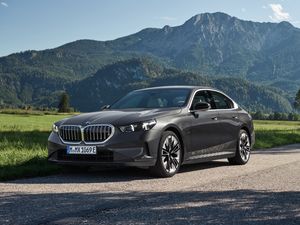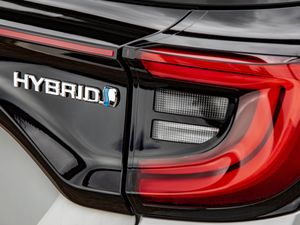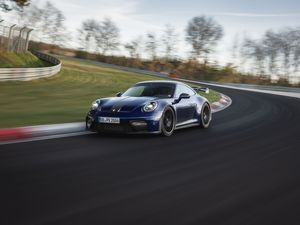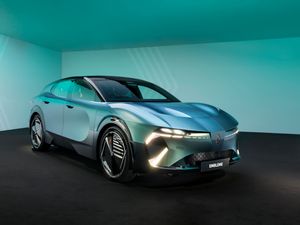First Drive: Nissan’s Leaf e+ makes EV ownership more compelling
Nissan has introduced a more powerful, longer-range version of its electric Leaf. Ryan Hirons finds out what it’s like…
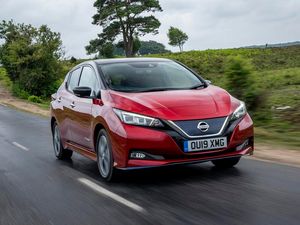
What is it?
As far as European EV domination goes, Nissan is doing pretty well with the Leaf. Now in its second generation, the hatchback remains top dog across the continent’s market for electric cars with over 130,000 sold since its 2010 introduction.
It’s easy to see why as well. The Leaf has always managed to make electric driving seem pretty normal, rather than go for the overly-futuristic edge that some firms tend to take – despite it often failing to resonate with new car buyers. Nissan isn’t resting on its laurels though and has now introduced this longer-range variant — the e+.

What’s new?
The key difference to the now-range-topping Leaf e+ comes underneath the skin. A 62kWh battery pack has been introduced in place of the base car’s 40kWh unit.
This means more power — now 214bhp from 148bhp — but crucially, more range too. Nissan says the e+ is capable of 239 miles between charges, an impressive leap from the regular machine’s 168-mile offering.
Spotting a Leaf e+ from a regular car is nigh on impossible, though, as no visual changes have been made — there isn’t even any new badging. It does jump straight to the top of the Leaf line-up though, so there’s plenty of equipment on-board.

What’s under the bonnet?
As mentioned, the Leaf e+ is all about that new battery pack. The 62kWh unit’s 214bhp and 340Nm output is sent to the front wheels, resulting in a 0-60mph time of 6.7 seconds and a 98mph top speed.
This power increase certainly makes a noticeable difference. Instant torque delivery will take you by surprise when putting your foot down and makes for easy merging and overtaking on motorways.
Nissan does claim a 239-mile range, though to achieve that you’d have to be sat in Eco mode with very gentle throttle usage and no air con. Realistically, expect to be able to cover 200-210 miles between charges — though this figure is still impressive and should prevent ‘range anxiety’ for most prospective buyers. As this is an EV, there are no CO2 emissions, either.

What’s it like to drive?
Fortunately, the overall driving experience hasn’t changed dramatically with the introduction of a larger battery pack. Navigating through town is just as easy thanks to lightly-set steering and decent visibility and is only helped by the increased power which makes darting around a little bit quicker.
The story is the same on the motorway, too. Road noise is fairly low — albeit more noticeable than internal combustion engine cars simply because of the near-silence from the electric motor — and it rides fairly comfortably too. We’re also huge fans of the e-pedal technology, allowing for accelerating and braking to be controlled by a single pedal. It takes some getting used to but is fun once you have the hang of it.
Where the real difference comes is under harder driving. The extra weight from the larger batteries is noticeable through corners and does compromise the balance of the car.

How does it look?
Nissan hasn’t opted to change the Leaf’s looks with the e+, and we think that’s for the best. It remains a sharp looking car that doesn’t stray too far from what a ‘normal’ hatchback would look like. It’s not a beautiful thing, but it’s definitely not bad either and we feel that’s enough to keep most buyers happy.

What’s it like inside?
Similar to the exterior, the Leaf e+ hasn’t changed inside either. Controls and screens remain the same — though to our eyes they seem a little bit outdated and cheap-looking compared with more digital solutions offered by rivals.
Everything feels solidly-built too, with a good amount of soft-touch materials deployed throughout the cabin. There are scratchy plastics to be found, but they’re in areas that drivers will rarely come into contact with.
Five can be seated in comfort, while a 405-litre boot capacity means it offers more space than even internal combustion rivals such as the Ford Focus (375 litres) and Volkswagen Golf (380 litres).

What’s the spec like?
As the Leaf’s new range-topper, the e+ comes with a high level of equipment. Available only in Tekna grade, standard luxury items include automatic full LED headlights, rain-sensing wipers, a seven-speaker Bose audio system, an eight-inch touchscreen infotainment system with support for both Apple CarPlay and Android Auto, 17-inch alloy wheels and a leather/suede combination interior upholstery.
There’s also Nissan’s ProPilot safety package as standard, including adaptive cruise control, lane keep assistance, steering assist, self-parking and blind spot monitoring, while every Leaf also includes the impressive e-pedal tech.
While this all sounds good, it does come at a price — from £35,895, to be exact. That’s after the government plug-in grant, pushing it above 64kWh variants of the Kia e-Niro and Hyundai Kona Electric. Further still, our test car comes to a hefty £36,820 as a result of optional metallic paint and a two-tone roof.

Verdict
With more range, more performance and a high level of equipment, the Nissan Leaf e+ only adds to the appeal of EV ownership — as long as it can suit your lifestyle, too.
A more-realistic 200ish miles of range will suit the daily needs of most drivers in the UK, and the Leaf’s approach to keeping the experience as familiar as possible means it won’t alienate any newcomers to an alternatively-fuelled world.
Its sticking point is its high starting price. Rivals from South Korea offer just as much at a slightly lower price — though you’re set to wait at least six months if you were to order a Kia e-Niro or Hyundai Kona Electric today, which might just be enough to make the Leaf’s quick availability appealing enough by itself.

